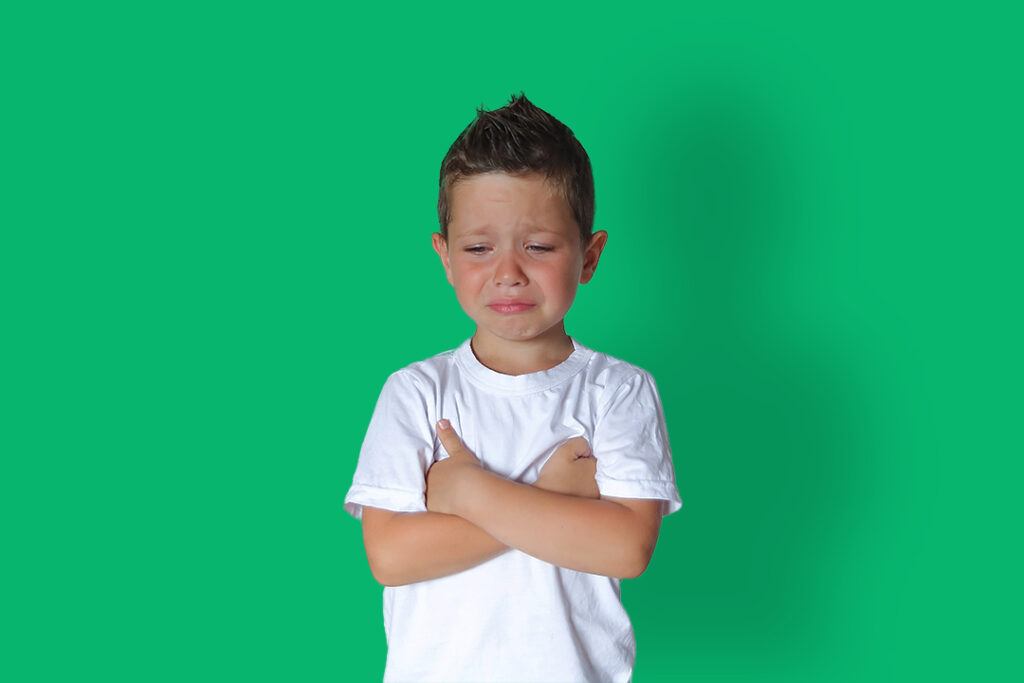Adrian, M., Jenness, J. L., Kuehn, K. S., Smith, M. R., & McLaughlin, K. A. (2019). Emotion regulation processes linking peer victimization to anxiety and depression symptoms in adolescence. Development and Psychopathology, 31(3), 999–1009. https://doi.org/10.1017/S0954579419000543
Alsem, S. C., van Dijk, A., Verhulp, E. E., & De Castro, B. O. (2021). Using virtual reality to treat aggressive behavior problems in children: A feasibility study. Clinical Child Psychology and Psychiatry, 26(4), 1062–1075. https://doi.org/10.1177/13591045211026160
Álvarez-García, D., García, T., & Núñez, J. C. (2015). Predictors of school bullying perpetration in adolescence: A systematic review. Aggression and Violent Behavior, 23, 126–136. https://doi.org/10.1016/j.avb.2015.05.007
Armitage, J. M., Morneau-Vaillancourt, G., Pingault, J.-B., Andlauer, T. F. M., Paquin, S., Langevin, S., Brendgen, M., Dionne, G., Séguin, J., Rouleau, G., Vitaro, F., Ouellet-Morin, I., & Boivin, M. (2022). A multi-informant and multi-polygenic approach to understanding predictors of peer victimisation in childhood and adolescence. JCPP Advances, 2(1), e12063. https://doi.org/10.1002/jcv2.12063
Arseneault, L. (2018). Annual Research Review: The persistent and pervasive impact of being bullied in childhood and adolescence: implications for policy and practice. Journal of Child Psychology and Psychiatry, and Allied Disciplines, 59(4), 405–421. https://doi.org/10.1111/jcpp.12841
Arseneault, L., Milne, B. J., Taylor, A., Adams, F., Delgado, K., Caspi, A., & Moffitt, T. E. (2008). Being bullied as an environmentally mediated contributing factor to children’s internalizing problems: A study of twins discordant for victimization. Archives of Pediatrics & Adolescent Medicine, 162(2), 145–150. https://doi.org/10.1001/archpediatrics.2007.53
Baldwin, J. R., Arseneault, L., Caspi, A., Fisher, H. L., Moffitt, T. E., Odgers, C. L., Pariante, C., Ambler, A., Dove, R., Kepa, A., Matthews, T., Menard, A., Sugden, K., Williams, B., & Danese, A. (2018). Childhood victimization and inflammation in young adulthood: A genetically sensitive cohort study. Brain, Behavior, and Immunity, 67, 211–217. https://doi.org/10.1016/j.bbi.2017.08.025
Barreda-Ángeles, M., Serra-Blasco, M., Trepat, E., Pereda-Baños, A., Pàmias, M., Palao, D., Goldberg, X., & Cardoner, N. (2021). Development and experimental validation of a dataset of 360°-videos for facilitating school-based bullying prevention programs. Computers & Education, 161, 104065. https://doi.org/10.1016/j.compedu.2020.104065
Biswas, T., Scott, J. G., Munir, K., Thomas, H. J., Huda, M. M., Hasan, M. M., Vries, T. D. de, Baxter, J., & Mamun, A. A. (2020). Global variation in the prevalence of bullying victimisation amongst adolescents: Role of peer and parental supports. EClinicalMedicine, 20. https://doi.org/10.1016/j.eclinm.2020.100276
Bonell, C., Allen, E., Warren, E., McGowan, J., Bevilacqua, L., Jamal, F., Legood, R., Wiggins, M., Opondo, C., Mathiot, A., Sturgess, J., Fletcher, A., Sadique, Z., Elbourne, D., Christie, D., Bond, L., Scott, S., & Viner, R. M. (2018). Effects of the Learning Together intervention on bullying and aggression in English secondary schools (INCLUSIVE): A cluster randomised controlled trial. The Lancet, 392(10163), 2452–2464. https://doi.org/10.1016/S0140-6736(18)31782-3
Bowes, L., Arseneault, L., Maughan, B., Taylor, A., Caspi, A., & Moffitt, T. E. (2009). School, neighborhood, and family factors are associated with children’s bullying involvement: A nationally representative longitudinal study. Journal of the American Academy of Child and Adolescent Psychiatry, 48(5), 545–553. https://doi.org/10.1097/CHI.0b013e31819cb017
Bowes, L., Maughan, B., Ball, H., Shakoor, S., Ouellet-Morin, I., Caspi, A., Moffitt, T. E., & Arseneault, L. (2013). Chronic bullying victimization across school transitions: The role of genetic and environmental influences. Development and Psychopathology, 25(2). https://doi.org/10.1017/S0954579412001095
Bowes, L., Maughan, B., Caspi, A., Moffitt, T. E., & Arseneault, L. (2010). Families promote emotional and behavioural resilience to bullying: Evidence of an environmental effect. Journal of Child Psychology and Psychiatry, and Allied Disciplines, 51(7), 809–817. https://doi.org/10.1111/j.1469-7610.2010.02216.x
Brendgen, M., Girard, A., Vitaro, F., Dionne, G., & Boivin, M. (2016). Personal and familial predictors of peer victimization trajectories from primary to secondary school. Developmental Psychology, 52(7), 1103–1114. https://doi.org/10.1037/dev0000107
Clarkson, S., Bowes, L., Coulman, E., Broome, M. R., Cannings-John, R., Charles, J. M., Edwards, R. T., Ford, T., Hastings, R. P., Hayes, R., Patterson, P., Segrott, J., Townson, J., Watkins, R., Badger, J., & Hutchings, J. (2022). The UK Stand Together trial: Protocol for a multicentre cluster randomised controlled trial to evaluate the effectiveness and cost-effectiveness of KiVa to reduce bullying in primary schools. BMC Public Health, 22, 608. https://doi.org/10.1186/s12889-022-12642-x
Cook, C. R., Williams, K. R., Guerra, N. G., Kim, T. E., & Sadek, S. (2010). Predictors of bullying and victimization in childhood and adolescence: A meta-analytic investigation. School Psychology Quarterly, 25(2), 65–83. https://doi.org/10.1037/a0020149
Copeland, W. E., Bulik, C. M., Zucker, N., Wolke, D., Lereya, S. T., & Costello, E. J. (2015). Does childhood bullying predict eating disorder symptoms? A prospective, longitudinal analysis. International Journal of Eating Disorders, 48(8), 1141–1149. https://doi.org/10.1002/eat.22459
Copeland, W. E., Wolke, D., Angold, A., & Costello, E. J. (2013). Adult Psychiatric and Suicide Outcomes of Bullying and Being Bullied by Peers in Childhood and Adolescence. JAMA Psychiatry (Chicago, Ill.), 70(4), 419–426. https://doi.org/10.1001/jamapsychiatry.2013.504
Copeland, W. E., Wolke, D., Lereya, S. T., Shanahan, L., Worthman, C., & Costello, E. J. (2014). Childhood bullying involvement predicts low-grade systemic inflammation into adulthood. Proceedings of the National Academy of Sciences of the United States of America, 111(21), 7570–7575. https://doi.org/10.1073/pnas.1323641111
Department of Education. (2019). Bullying in England, April 2013 to March 2018 (Ad-hoc Notice). https://www.gov.uk/government/publications/bullying-in-england-april-2013-to-march-2018
Earnshaw, V. A., Reisner, S. L., Menino, D., Poteat, V. P., Bogart, L. M., Barnes, T. N., & Schuster, M. A. (2018). Stigma-Based Bullying Interventions: A Systematic Review. Developmental Review: DR, 48, 178–200. https://doi.org/10.1016/j.dr.2018.02.001
EMCDDA, The European Monitoring Centre for Drugs and Drug Addiction. (2018). Olweus Bullying Prevention Programme—A school-wide programme designed to prevent bullying amongst children. https://www.emcdda.europa.eu/best-practice/xchange/olweus-bullying-prevention-programme-school-wide-programme-designed-prevent-bullying-amongst-children_en#impexp
EMCDDA, The European Monitoring Centre for Drugs and Drug Addiction. (2020). KiVa (Anti-bullying programme)—Combined universal and indicated type of an anti-bullying programme for school children. https://www.emcdda.europa.eu/best-practice/xchange/kiva-anti-bullying-programme-combined-universal-and-indicated-type-anti-bullying-programme-school-children_en
Farrington, D. P. (2012). School bullying, depression and offending behavior later in life: An updated systematic review of longitudinal studies. BRÅ, National Council for Crime Prevention.
Finkelhor, D., Ormrod, R. K., & Turner, H. A. (2007). Poly-victimization: A neglected component in child victimization. Child Abuse & Neglect, 31(1), 7–26. https://doi.org/10.1016/j.chiabu.2006.06.008
Gaffney, H., Ttofi, M. M., & Farrington, D. P. (2019). Evaluating the effectiveness of school-bullying prevention programs: An updated meta-analytical review. Aggression and Violent Behavior, 45, 111–133. https://doi.org/10.1016/j.avb.2018.07.001
Gaffney, H., Ttofi, M. M., & Farrington, D. P. (2021). What works in anti-bullying programs? Analysis of effective intervention components. Journal of School Psychology, 85, 37–56. https://doi.org/10.1016/j.jsp.2020.12.002
Ganesan, K., Shakoor, S., Wertz, J., Agnew-Blais, J., Bowes, L., Jaffee, S. R., Matthews, T., & Arseneault, L. (2021). Bullying behaviours and other conduct problems: Longitudinal investigation of their independent associations with risk factors and later outcomes. Social Psychiatry and Psychiatric Epidemiology, 56(11), 2041–2052. https://doi.org/10.1007/s00127-021-02062-4
Garandeau, C. F., & Salmivalli, C. (2019). Can Healthier Contexts Be Harmful? A New Perspective on the Plight of Victims of Bullying. Child Development Perspectives, 13(3), 147–152. https://doi.org/10.1111/cdep.12331
Garandeau, C. F., Lee, Ihno A., & Salmivalli, Christina. (2014). Inequality Matters: Classroom Status Hierarchy and Adolescents’ Bullying. Journal of Youth and Adolescence, 43, 1123null. https://doi.org/10.1007/s10964-013-0040-4
Gladden, R., Vivolo-Kantor, A., Hamburger, M., & Lumpkin, C. (2014). Bullying Surveillance Among Youths: Uniform Definitions for Public Health and Recommended Data Elements, Version 1.0. https://www.cdc.gov/violenceprevention/pdf/bullying-definitions-final-a.pdf
Green, J. G., Felix, E. D., Sharkey, J. D., Furlong, M. J., & Kras, J. E. (2013). Identifying bully victims: Definitional versus behavioral approaches. Psychological Assessment, 25(2), 651–657. https://doi.org/10.1037/a0031248
Guy, A., Lee, K., & Wolke, D. (2019). Comparisons Between Adolescent Bullies, Victims, and Bully-Victims on Perceived Popularity, Social Impact, and Social Preference. Frontiers in Psychiatry, 10. https://www.frontiersin.org/article/10.3389/fpsyt.2019.00868
Guzman-Holst, C., Zaneva, M., Chessell, C., Creswell, C., & Bowes, L. (2022). Research Review: Do antibullying interventions reduce internalizing symptoms? A systematic review, meta-analysis, and meta-regression exploring intervention components, moderators, and mechanisms. Journal of Child Psychology and Psychiatry, and Allied Disciplines. https://doi.org/10.1111/jcpp.13620
Hakim, E. (2020). You’ve got the disease: How disgust in child culture shapes school bullying. Ethnography and Education. https://doi.org/10.1080/17457823.2020.1864655
Houchins, D. E., Oakes, W. P., & Johnson, Z. G. (2016). Bullying and Students With Disabilities: A Systematic Literature Review of Intervention Studies. Remedial and Special Education, 37(5), 259–273. https://doi.org/10.1177/0741932516648678
Huitsing, G., Lodder, G. M. A., Browne, W. J., Oldenburg, B., Van der Ploeg, R., & Veenstra, R. (2020). A Large-Scale Replication of the Effectiveness of the KiVa Antibullying Program: A Randomized Controlled Trial in the Netherlands. Prevention Science: The Official Journal of the Society for Prevention Research, 21(5), 627–638. https://doi.org/10.1007/s11121-020-01116-4
Ingram, K. M., Espelage, D. L., Merrin, G. J., Valido, A., Heinhorst, J., & Joyce, M. (2019). Evaluation of a virtual reality enhanced bullying prevention curriculum pilot trial. Journal of Adolescence, 71, 72–83. https://doi.org/10.1016/j.adolescence.2018.12.006
Iob, E., Baldwin, J. R., Plomin, R., & Steptoe, A. (2021). Adverse childhood experiences, daytime salivary cortisol, and depressive symptoms in early adulthood: A longitudinal genetically informed twin study. Translational Psychiatry, 11(1), 1–10. https://doi.org/10.1038/s41398-021-01538-w
Jansen, D. E., Veenstra, R., Ormel, J., Verhulst, F. C., & Reijneveld, S. A. (2011). Early risk factors for being a bully, victim, or bully/victim in late elementary and early secondary education. The longitudinal TRAILS study. BMC Public Health, 11, 440. https://doi.org/10.1186/1471-2458-11-440
Kann, L. (2016). Sexual Identity, Sex of Sexual Contacts, and Health-Related Behaviors Among Students in Grades 9–12—United States and Selected Sites, 2015. MMWR. Surveillance Summaries, 65. https://doi.org/10.15585/mmwr.ss6509a1
Kärnä, A., Voeten, M., Little, T. D., Alanen, E., Poskiparta, E., & Salmivalli, C. (2013). Effectiveness of the KiVa Antibullying Program: Grades 1–3 and 7–9. Journal of Educational Psychology, 105(2), 535–551. https://doi.org/10.1037/a0030417
Kärnä, A., Voeten, M., Little, T. D., Poskiparta, E., Kaljonen, A., & Salmivalli, C. (2011). A large-scale evaluation of the KiVa antibullying program: Grades 4-6. Child Development, 82(1), 311–330. https://doi.org/10.1111/j.1467-8624.2010.01557.x
Kaufman, T. M. L., Kretschmer, T., Huitsing, G., & Veenstra, R. (2018). Why Does a Universal Anti-Bullying Program Not Help All Children? Explaining Persistent Victimization During an Intervention. Prevention Science, 19(6), 822–832. https://doi.org/10.1007/s11121-018-0906-5
Kellij, S., Lodder, G. M. A., van den Bedem, N., Güroğlu, B., & Veenstra, R. (2022). The Social Cognitions of Victims of Bullying: A Systematic Review. Adolescent Research Review. https://doi.org/10.1007/s40894-022-00183-8
Kochenderfer-Ladd, B., Ladd, G. W., & Thibault, S. A. (2021). School Bullying and Peer Victimization-Its Role in Students’ Academic Achievement. In The Wiley Blackwell Handbook of Bullying (pp. 619–638). John Wiley & Sons, Ltd. https://doi.org/10.1002/9781118482650.ch34
Kretschmer, T., Tropf, F. C., & Niezink, N. M. D. (2018). Causality and Pleiotropy in the Association Between Bullying Victimization in Adolescence and Depressive Episodes in Adulthood. Twin Research and Human Genetics: The Official Journal of the International Society for Twin Studies, 21(1), 33–41. https://doi.org/10.1017/thg.2017.71
Lereya, S. T., Copeland, W. E., Zammit, S., & Wolke, D. (2015). Bully/victims: A longitudinal, population-based cohort study of their mental health. European Child & Adolescent Psychiatry, 24(12), 1461–1471. https://doi.org/10.1007/s00787-015-0705-5
Lereya, S. T., Samara, M., & Wolke, D. (2013). Parenting behavior and the risk of becoming a victim and a bully/victim: A meta-analysis study. Child Abuse & Neglect, 37(12), 1091–1108. https://doi.org/10.1016/j.chiabu.2013.03.001
McLaughlin, K. A., DeCross, S. N., Jovanovic, T., & Tottenham, N. (2019). Mechanisms linking childhood adversity with psychopathology: Learning as an intervention target. Behaviour Research and Therapy, 118, 101–109. https://doi.org/10.1016/j.brat.2019.04.008
Modecki, K. L., Minchin, J., Harbaugh, A. G., Guerra, N. G., & Runions, K. C. (2014). Bullying prevalence across contexts: A meta-analysis measuring cyber and traditional bullying. The Journal of Adolescent Health: Official Publication of the Society for Adolescent Medicine, 55(5), 602–611. https://doi.org/10.1016/j.jadohealth.2014.06.007
Moore, S. E., Norman, R. E., Suetani, S., Thomas, H. J., Sly, P. D., & Scott, J. G. (2017). Consequences of bullying victimization in childhood and adolescence: A systematic review and meta-analysis. World Journal of Psychiatry, 7(1), 60–76. https://doi.org/10.5498/wjp.v7.i1.60
Nansel, T. R., Overpeck, M., Pilla, R. S., Ruan, W. J., Simons-Morton, B., & Scheidt, P. (2001). Bullying Behaviors Among US Youth Prevalence and Association With Psychosocial Adjustment. JAMA, 285(16), 2094–2100. https://doi.org/10.1001/jama.285.16.2094
Nocentini, A., Fiorentini, G., Di Paola, L., & Menesini, E. (2019). Parents, family characteristics and bullying behavior: A systematic review. Aggression and Violent Behavior, 45, 41–50. https://doi.org/10.1016/j.avb.2018.07.010
Nocentini, A., & Menesini, E. (2016). KiVa Anti-Bullying Program in Italy: Evidence of Effectiveness in a Randomized Control Trial. Prevention Science: The Official Journal of the Society for Prevention Research, 17(8), 1012–1023. https://doi.org/10.1007/s11121-016-0690-z
Olweus Bullying Prevention Programme—A school-wide programme designed to prevent bullying amongst children | www.emcdda.europa.eu. (n.d.). Retrieved February 27, 2022, from https://www.emcdda.europa.eu/best-practice/xchange/olweus-bullying-prevention-programme-school-wide-programme-designed-prevent-bullying-amongst-children_en
Olweus, D. (1983). The Olweus Bully/Victim Questionnaire. Mimeo. Bergen, Norway. Research Centre for Health Promotion (HEMIL), University of Bergen.
Olweus, D. (2013). School Bullying: Development and Some Important Challenges. Annual Review of Clinical Psychology, 9(1), 751–780. https://doi.org/10.1146/annurev-clinpsy-050212-185516
Olweus, D., & Limber, S. P. (2010). Bullying in School: Evaluation and Dissemination of the Olweus Bullying Prevention Program. American Journal of Orthopsychiatry, 80(1), 124–134. https://doi.org/10.1111/j.1939-0025.2010.01015.x
Olweus, D., & Limber, S. P. (2019). The Olweus Bullying Prevention Program (OBPP). In Making an Impact on School Bullying. Routledge.
Olweus, D., Limber, S. P., Riese, J., Urbanski, J., Solberg, M. E., & Breivik, K. (2021). The Olweus Bullying Prevention Program (OBPP). In The Wiley Blackwell Handbook of Bullying (pp. 410–429). John Wiley & Sons, Ltd. https://doi.org/10.1002/9781118482650.ch56
Olweus, D., Solberg, M. E., & Breivik, K. (2020). Long-term school-level effects of the Olweus Bullying Prevention Program (OBPP). Scandinavian Journal of Psychology, 61(1), 108–116. https://doi.org/10.1111/sjop.12486
Oncioiu, S. I., Boivin, M., Geoffroy, M.-C., Arseneault, L., Galéra, C., Navarro, M. C., Brendgen, M., Vitaro, F., Tremblay, R. E., Côté, S. M., & Orri, M. (2021). Mental health comorbidities following peer victimization across childhood and adolescence: A 20-year longitudinal study. Psychological Medicine, 1–13. https://doi.org/10.1017/S0033291721003822
Oncioiu, S. I., Orri, M., Boivin, M., Geoffroy, M.-C., Arseneault, L., Brendgen, M., Vitaro, F., Navarro, M. C., Galéra, C., Tremblay, R. E., & Côté, S. M. (2020). Early Childhood Factors Associated With Peer Victimization Trajectories From 6 to 17 Years of Age. Pediatrics, 145(5). https://doi.org/10.1542/peds.2019-2654
oRANGE, Oxford Lab of Risk and Resilience, Genes &. Environment. (2021). Anti-bullying Week—Adolescent Responses to a Bullying Situation. https://www.orangelaboxford.com/anti-bullying-week.html
Ouellet-Morin, I., Danese, A., Bowes, L., Shakoor, S., Ambler, A., Pariante, C. M., Papadopoulos, A. S., Caspi, A., Moffitt, T. E., & Arseneault, L. (2011). A Discordant Monozygotic Twin Design Shows Blunted Cortisol Reactivity Among Bullied Children. Journal of the American Academy of Child and Adolescent Psychiatry, 50(6), 574-582.e3. https://doi.org/10.1016/j.jaac.2011.02.015
Przybylski, A. K., & Bowes, L. (2017). Cyberbullying and adolescent well-being in England: A population-based cross-sectional study. The Lancet. Child & Adolescent Health, 1(1), 19–26. https://doi.org/10.1016/S2352-4642(17)30011-1
Reijntjes, A., Kamphuis, J. H., Prinzie, P., Boelen, P. A., van der Schoot, M., & Telch, M. J. (2011). Prospective linkages between peer victimization and externalizing problems in children: A meta-analysis. Aggressive Behavior, 37(3), 215–222. https://doi.org/10.1002/ab.20374
Reijntjes, A., Kamphuis, J. H., Prinzie, P., & Telch, M. J. (2010). Peer victimization and internalizing problems in children: A meta-analysis of longitudinal studies. Child Abuse & Neglect, 34(4), 244–252. https://doi.org/10.1016/j.chiabu.2009.07.009
Rønning, J. A., Sourander, A., Kumpulainen, K., Tamminen, T., Niemelä, S., Moilanen, I., Helenius, H., Piha, J., & Almqvist, F. (2009). Cross-informant agreement about bullying and victimization among eight-year-olds: Whose information best predicts psychiatric caseness 10-15 years later? Social Psychiatry and Psychiatric Epidemiology, 44(1), 15–22. https://doi.org/10.1007/s00127-008-0395-0
Salmivalli, C. (2021). Challenging bullying cases: Let’s take the challenge (Always Take Action). Friends, World Anti-Bullying Forum. https://worldantibullyingforum.com/uploads/sites/2/2021/06/Anthology-Always-take-action.pdf
Salmivalli, C., Lagerspetz, K., Björkqvist, K., Österman, K., & Kaukiainen, A. (1996). Bullying as a group process: Participant roles and their relations to social status within the group. Aggressive Behavior, 22(1), 1–15. https://doi.org/10.1002/(SICI)1098-2337(1996)22:1<1::AID-AB1>3.0.CO;2-T
Salmivalli, C., Laninga-Wijnen, L., Malamut, S. T., & Garandeau, C. F. (2021). Bullying Prevention in Adolescence: Solutions and New Challenges from the Past Decade. Journal of Research on Adolescence, 31(4), 1023–1046. https://doi.org/10.1111/jora.12688
Schacter, H. L. (2021). Effects of Peer Victimization on Child and Adolescent Physical Health. Pediatrics, 147(1), e2020003434. https://doi.org/10.1542/peds.2020-003434
Schoeler, T., Choi, S. W., Dudbridge, F., Baldwin, J., Duncan, L., Cecil, C. M., Walton, E., Viding, E., McCrory, E., & Pingault, J.-B. (2019). Multi-Polygenic Score Approach to Identifying Individual Vulnerabilities Associated With the Risk of Exposure to Bullying. JAMA Psychiatry. https://doi.org/10.1001/jamapsychiatry.2019.0310
Schoeler, T., Duncan, L., Cecil, C. M., Ploubidis, G. B., & Pingault, J.-B. (2018). Quasi-experimental evidence on short- and long-term consequences of bullying victimization: A meta-analysis. Psychological Bulletin, 144(12), 1229–1246. https://doi.org/10.1037/bul0000171
Sentenac, M., Arnaud, C., Gavin, A., Molcho, M., Gabhainn, S. N., & Godeau, E. (2012). Peer victimization among school-aged children with chronic conditions. Epidemiologic Reviews, 34, 120–128. https://doi.org/10.1093/epirev/mxr024
Shakoor, S., Jaffee, S. R., Andreou, P., Bowes, L., Ambler, A. P., Caspi, A., Moffitt, T. E., & Arseneault, L. (2011). Mothers and Children as Informants of Bullying Victimization: Results from an Epidemiological Cohort of Children. Journal of Abnormal Child Psychology, 39(3), 379–387. https://doi.org/10.1007/s10802-010-9463-5
Silberg, J. L., Copeland, W., Linker, J., Moore, A. A., Roberson-Nay, R., & York, T. P. (2016). Psychiatric outcomes of bullying victimization: A study of discordant monozygotic twins. Psychological Medicine, 46(9), 1875–1883. https://doi.org/10.1017/S0033291716000362
Singham, T., Viding, E., Schoeler, T., Arseneault, L., Ronald, A., Cecil, C. M., McCrory, E., Rijsdijk, F., & Pingault, J.-B. (2017). Concurrent and Longitudinal Contribution of Exposure to Bullying in Childhood to Mental Health: The Role of Vulnerability and Resilience. JAMA Psychiatry, 74(11), 1112–1119. https://doi.org/10.1001/jamapsychiatry.2017.2678
Soneson, E., Puntis, S., Chapman, N., Mansfield, K. L., Jones, P. B., & Fazel, M. (2022). Happier during lockdown: A descriptive analysis of self-reported wellbeing in 17,000 UK school students during Covid-19 lockdown. European Child & Adolescent Psychiatry. https://doi.org/10.1007/s00787-021-01934-z
Sullivan, T. N., Farrell, A. D., Sutherland, K. S., Behrhorst, K. L., Garthe, R. C., & Greene, A. (2021). Evaluation of the Olweus Bullying Prevention Program in US Urban Middle Schools Using a Multiple Baseline Experimental Design. Prevention Science: The Official Journal of the Society for Prevention Research, 22(8), 1134–1146. https://doi.org/10.1007/s11121-021-01244-5
Thornberg, R. (2018). School bullying and fitting into the peer landscape: A grounded theory field study. British Journal of Sociology of Education, 39(1), 144–158. https://doi.org/10.1080/01425692.2017.1330680
Ttofi, M. M., Bowes, L., Farrington, D., & Lösel, F. (2014). Protective Factors Interrupting the Continuity From School Bullying to Later Internalizing and Externalizing Problems: A Systematic Review of Prospective Longitudinal Studies. https://doi.org/10.1080/15388220.2013.857345
Ttofi, M. M., Farrington, D. P., & Lösel, F. (2012). School bullying as a predictor of violence later in life: A systematic review and meta-analysis of prospective longitudinal studies. Aggression and Violent Behavior, 17(5), 405–418. https://doi.org/10.1016/j.avb.2012.05.002
UNESCO, The United Nations Educational, Scientific and Cultural Organization. (2016). Global guidance on addressing school-related gender-based violence. https://unesdoc.unesco.org/ark:/48223/pf0000246651
UNESCO, The United Nations Educational, Scientific and Cultural Organization. (2019). Behind the numbers: Ending school violence and bullying, 2019. https://unesdoc.unesco.org/ark:/48223/pf0000366483
UNESCO, The United Nations Educational, Scientific and Cultural Organization. (2021). Violence and bullying in educational settings: The experience of children and young people with disabilities. https://unesdoc.unesco.org/ark:/48223/pf0000378061
Ungar, M., & Theron, L. (2020). Resilience and mental health: How multisystemic processes contribute to positive outcomes. The Lancet Psychiatry, 7(5), 441–448. https://doi.org/10.1016/S2215-0366(19)30434-1
Vaillancourt, T., Brittain, H., Krygsman, A., Farrell, A. H., Landon, S., & Pepler, D. (2021). School bullying before and during COVID-19: Results from a population-based randomized design. Aggressive Behavior, 47(5), 557–569. https://doi.org/10.1002/ab.21986
Vaillancourt, T., Duku, E., Decatanzaro, D., Macmillan, H., Muir, C., & Schmidt, L. A. (2008). Variation in hypothalamic–pituitary–adrenal axis activity among bullied and non-bullied children. Aggressive Behavior, 34(3), 294–305. https://doi.org/10.1002/ab.20240
Vaillancourt, T., McDougall, P., Hymel, S., Krygsman, A., Miller, J., Stiver, K., & Davis, C. (2008). Bullying: Are researchers and children/youth talking about the same thing?: International Journal of Behavioral Development. https://doi.org/10.1177/0165025408095553
Valmaggia, L. R., Latif, L., Kempton, M. J., & Rus-Calafell, M. (2016). Virtual reality in the psychological treatment for mental health problems: A systematic review of recent evidence. Psychiatry Research, 236, 189–195. https://doi.org/10.1016/j.psychres.2016.01.015
Vivolo-Kantor, A. M., Martell, B. N., Holland, K. M., & Westby, R. (2014). A systematic review and content analysis of bullying and cyber-bullying measurement strategies. Aggression and Violent Behavior, 19(4), 423–434. https://doi.org/10.1016/j.avb.2014.06.008
Vrijen, C., Wiertsema, M., Ackermans, M. A., Ploeg, R. van der, & Kretschmer, T. (2021). Childhood and Adolescent Bullying Perpetration and Later Substance Use: A Meta-analysis. Pediatrics, 147(3). https://doi.org/10.1542/peds.2020-034751
Warren, E., Melendez-Torres, G. J., Viner, R., & Bonell, C. (2020). Using qualitative research to explore intervention mechanisms: Findings from the trial of the Learning Together whole-school health intervention. Trials, 21(1), 774. https://doi.org/10.1186/s13063-020-04688-2
Wienke Totura, C. M., Green, A. E., Karver, M. S., & Gesten, E. L. (2009). Multiple informants in the assessment of psychological, behavioral, and academic correlates of bullying and victimization in middle school. Journal of Adolescence, 32(2), 193–211. https://doi.org/10.1016/j.adolescence.2008.04.005
Wolke, D., Lee, K., & Guy, A. (2017). Cyberbullying: A storm in a teacup? European Child & Adolescent Psychiatry, 26(8), 899–908. https://doi.org/10.1007/s00787-017-0954-6
Wolke, D., & Skew, A. J. (2012). Bullying among siblings. International Journal of Adolescent Medicine and Health, 24(1), 17–25. https://doi.org/10.1515/ijamh.2012.004
Yun, H.-Y., & Salmivalli, C. (2021). The KiVa Anti-Bullying Program. In The Wiley Blackwell Handbook of Bullying (pp. 430–449). John Wiley & Sons, Ltd. https://doi.org/10.1002/9781118482650.ch57
Zych, I., Farrington, D. P., & Ttofi, M. M. (2019). Protective factors against bullying and cyberbullying: A systematic review of meta-analyses. Aggression and Violent Behavior, 45, 4–19. https://doi.org/10.1016/j.avb.2018.06.008
Zych, I., Ttofi, M. M., & Farrington, D. P. (2019). Empathy and Callous-Unemotional Traits in Different Bullying Roles: A Systematic Review and Meta-Analysis. Trauma, Violence & Abuse, 20(1), 3–21. https://doi.org/10.1177/1524838016683456
Zych, I., Ttofi, M. M., Llorent, V. J., Farrington, D. P., Ribeaud, D., & Eisner, M. P. (2020). A Longitudinal Study on Stability and Transitions Among Bullying Roles. Child Development, 91(2), 527–545. https://doi.org/10.1111/cdev.13195
Zych, I., Viejo, C., Vila, E., & Farrington, D. P. (2021). School Bullying and Dating Violence in Adolescents: A Systematic Review and Meta-Analysis. Trauma, Violence & Abuse, 22(2), 397–412. https://doi.org/10.1177/1524838019854460




